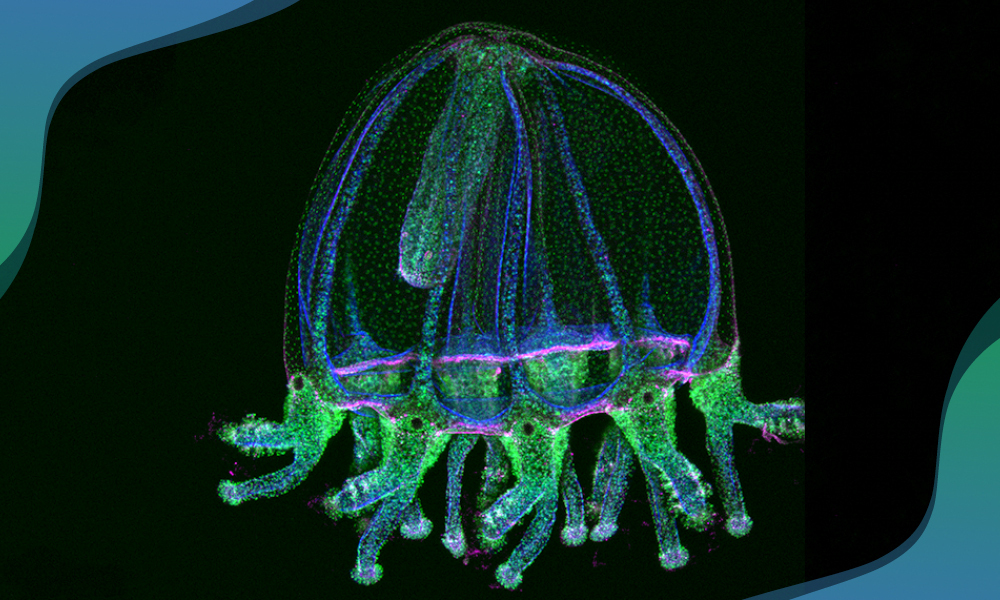EMBL scientists are on a quest to investigate the underlying biological processes that enable regeneration in jellyfish, which could also help us understand how wounds heal

By Pavlina Markova, Predoctoral Fellow, Watt Group
From the bustling halls of the University of Tokyo to the cutting-edge labs of EMBL Heidelberg, Sosuke Fujita has brought an unusual partner along for the ride - a jellyfish. Jellyfish might look like oceanic umbrellas, but instead of keeping you dry, they're teaching scientists how to heal. Using this unique organism, Fujita, currently a postdoc in EMBL's Ikmi Group, is trying to unlock new insights into tissue regeneration.
Jellyfish are small marine animals whose bell-shaped bodies are ~95% water and have trailing tentacles. These tentacles, decorated with stinging cells, are used as weapons - both to catch prey and to protect themselves against predators. When jellyfish lose some of these tentacles in fierce battles, they reveal their true superpower - rapidly regrowing their missing body parts, forming a new functional tentacle within a few days. This extraordinary regenerative ability has caught the attention of scientists like Fujita.
So, how do the jellyfish do it? The secret lies within the stunning image of this creature shown above. The glowing magenta ring around the base of the bell represents a particular subtype of neural cells, containing a small protein called FMRFamide. Such cells resemble stars, as they consist of a round neuronal body and many protrusions which extend down the jellyfish's tentacles to receive and transmit signals.
By cutting off parts of the tentacle and observing how quickly they grow back, Fujita discovered something surprising: only tentacles with intact neuronal cell bodies were able to regenerate fully. This finding suggests that these special neural cells play a crucial role in the jellyfish's ability to regrow its lost parts. Though still in its early stages, this work could potentially pave the way for new breakthroughs in regenerative biology and medicine.






